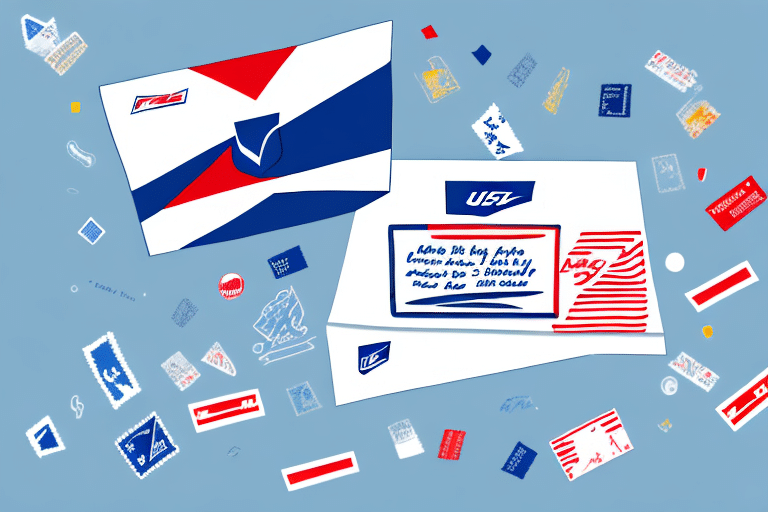Understanding USPS Priority Mail Insurance Rates
If you regularly send packages using USPS Priority Mail, it's crucial to understand the insurance coverage options available to you. USPS Priority Mail Insurance offers peace of mind and financial protection in case of loss or damage during transit. This article covers everything you need to know about USPS Priority Mail Insurance, including its importance, coverage details, costs, comparisons with other providers, tips for choosing the right coverage, filing claims, common misconceptions, and understanding the policy's fine print.
Why USPS Priority Mail Insurance is Essential for Your Shipments
Whether shipping valuable items or simply wanting assurance that your package arrives safely, USPS Priority Mail Insurance is a valuable tool. With default coverage up to $50 and options to purchase additional coverage, you can protect shipments of delicate or fragile items, such as electronics, artwork, or antiques. Insuring your packages helps safeguard against unexpected losses.
Moreover, USPS Priority Mail Insurance can expedite the claims process in case of loss or damage. Typically, insured shipments are eligible for quicker refunds or replacements compared to uninsured ones, minimizing inconvenience.
In terms of cost-effectiveness, USPS Priority Mail Insurance is often more affordable than other shipping insurance options. While some carriers may offer higher coverage limits, they might also charge significantly more. USPS provides basic coverage for free and offers additional coverage at reasonable rates, making it a cost-effective choice for many shippers.
Coverage and Cost of USPS Priority Mail Insurance
Coverage Details
USPS Priority Mail Insurance covers the loss, damage, or missing contents of your shipment. However, certain items and scenarios are excluded. For instance, perishable items, cash, and jewelry are not covered under this insurance. The maximum coverage limit for Priority Mail packages is $5,000.
To file a claim for Priority Mail Insurance, you must provide documentation, including proof of value, proof of mailing, and evidence of any damage or loss. Be aware that there are restrictions, such as time limits on when a claim must be filed. Carefully review the USPS terms and conditions for comprehensive details.
Priority Mail Insurance covers the item's actual value, not the replacement cost. For rare or unique items, consider purchasing additional insurance or declaring a higher value. USPS may require an inspection of the damaged or lost item before approving a claim, so be prepared to provide access if necessary.
Cost Structure
The cost of USPS Priority Mail Insurance depends on the declared value of the package. By default, Priority Mail provides insurance coverage up to $50 at no additional charge. Additional coverage can be purchased up to $5,000, with costs varying based on the package's value. For example, coverage for items valued under $100 may start at a few dollars, increasing progressively for higher-value items. For detailed pricing, refer to the USPS insurance pricing page.
Note that Priority Mail Insurance covers only the value of the contents and does not include shipping costs. Additionally, certain items may be restricted or prohibited from being insured, such as perishable goods or hazardous materials. Always review USPS guidelines and restrictions before purchasing additional insurance.
Comparing USPS Priority Mail Insurance with Other Shipping Providers
When shipping packages with other carriers like FedEx or UPS, it's essential to compare insurance options. Generally, USPS Priority Mail Insurance offers cost-effective coverage, but other carriers may provide different benefits.
UPS offers declared value coverage, allowing you to insure your package for a specific amount rather than a predetermined amount based on weight and destination. FedEx provides various insurance options, including declared value coverage and additional options for high-value items. Depending on your shipment's value and requirements, one of these options might better suit your needs.
Consider factors such as the value of your items, insurance costs, tracking features, and delivery speeds when choosing a carrier. For high-value items, paying a higher fee for additional coverage with another carrier might be worthwhile.
Tips for Choosing the Right USPS Priority Mail Insurance Coverage
Assess the Value of Your Shipment
Carefully evaluate the value of the items you're shipping. For high-value items, opting for additional insurance coverage beyond the default can provide extra protection. Ensure that the declared value accurately reflects the item's worth to maximize reimbursement in case of loss or damage.
Consider the Destination
When shipping internationally, research the customs regulations and restrictions of the destination country. Some countries may have specific insurance requirements or limitations, especially for items like electronics or jewelry. Be prepared to provide additional documentation or insurance coverage as required.
Proper Packaging
Properly packaging your items minimizes the risk of damage during shipping. Use sturdy boxes, high-quality packing materials, and clearly label the package with the recipient’s address and necessary shipping labels. Secure packaging can aid in reducing claims for damage and speed up the claims process if needed.
Filing a Claim for USPS Priority Mail Insurance
If you need to file a claim for USPS Priority Mail Insurance, you can do so online through the USPS website or by visiting your local Post Office. Ensure you provide all necessary documentation, including proof of value, proof of mailing, and evidence of damage or loss. Claims processing can take several weeks, so plan accordingly.
Remember that USPS Priority Mail Insurance only covers up to a specified amount based on the declared value. If your package's value exceeds this limit, consider purchasing additional insurance or using a different shipping method. For international shipments, be aware that the claims process may require additional documentation, such as customs forms and proof of delivery, and may take longer to process.
Common Misconceptions about USPS Priority Mail Insurance
There are several misconceptions surrounding USPS Priority Mail Insurance. One common misunderstanding is that all packages automatically include insurance coverage. In reality, only Priority Mail packages have insurance coverage by default. Additionally, many assume that this insurance covers all possible losses or damages, but there are specific exclusions and limitations.
Another misconception is that USPS Priority Mail Insurance is always the most cost-effective option. While it is often affordable, it's essential to consider the value of your package, destination, and specific coverage needs. In some cases, other carriers might offer more suitable insurance options for high-value or specialized items.
Understanding the Fine Print of USPS Priority Mail Insurance
As with any insurance policy, it's crucial to read the fine print of your Priority Mail Insurance policy before shipping. Understand the terms and conditions, coverage limitations, and exclusions, as well as the procedures for filing claims. Being well-informed about your insurance policy helps ensure you're prepared to handle any unexpected issues during transit.
In summary, understanding USPS Priority Mail Insurance rates, coverage, and policies is vital for effective and secure package shipping. By being informed about costs, coverage details, and the claims process, you can make prudent decisions to protect your shipments against loss or damage.
Remember that Priority Mail Insurance covers the item's declared value up to the policy's limit but does not include shipping costs. Certain items, such as perishable goods, live animals, and hazardous materials, are not eligible for coverage. Always review the list of prohibited items before purchasing insurance to ensure your shipment qualifies.






















